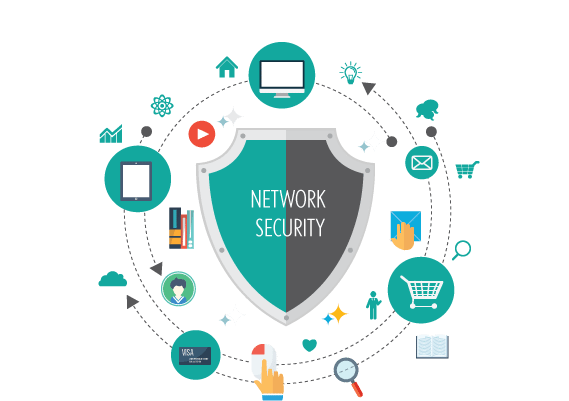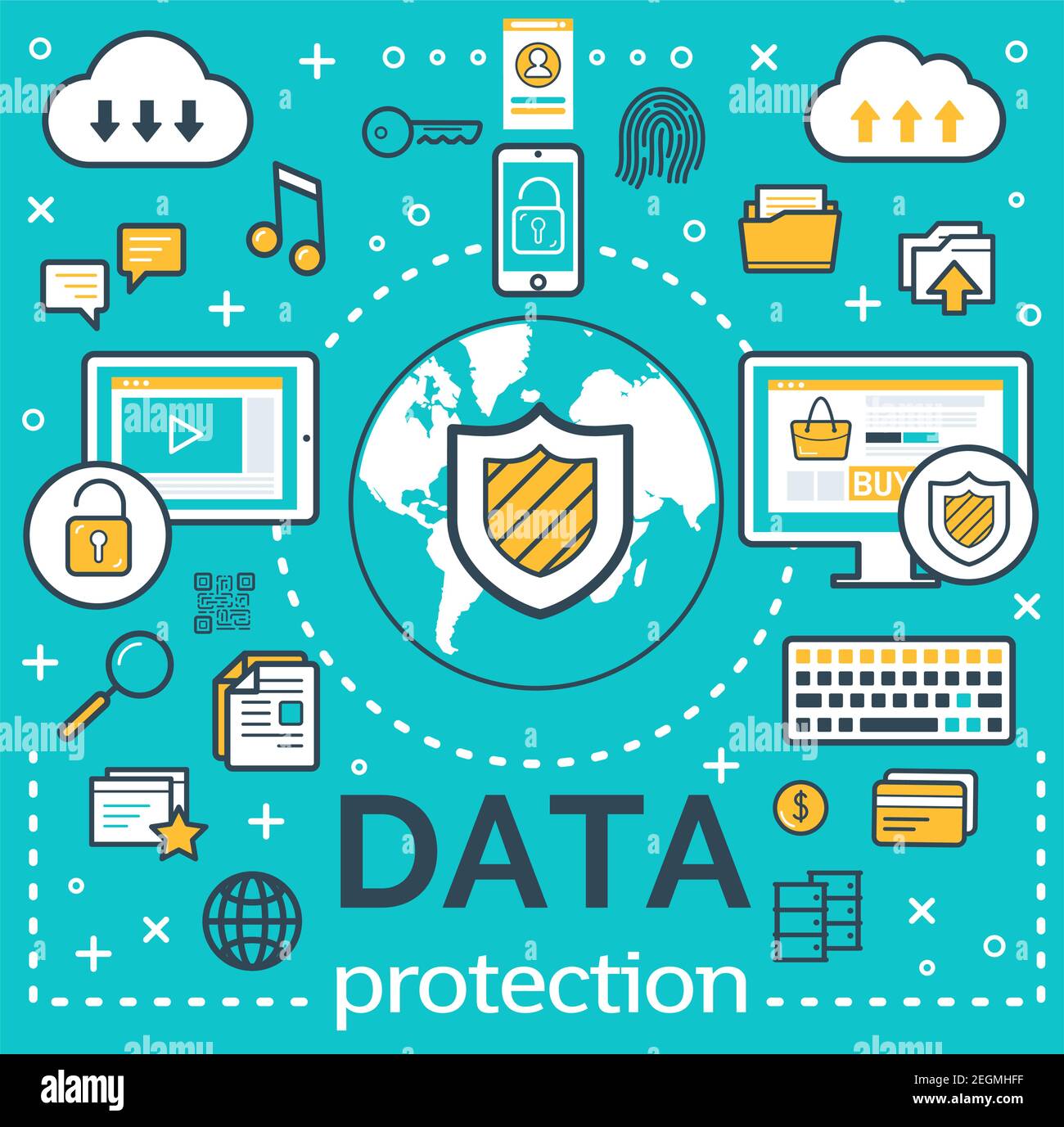How Data and Network Security Protects Versus Emerging Cyber Dangers
In an era noted by the fast development of cyber threats, the value of information and network safety and security has actually never ever been more noticable. Organizations are increasingly reliant on advanced security steps such as security, gain access to controls, and aggressive tracking to guard their digital possessions. As these threats end up being a lot more complicated, recognizing the interplay between information safety and network defenses is important for reducing dangers. This discussion intends to explore the essential components that strengthen a company's cybersecurity posture and the methods required to stay ahead of potential susceptabilities. What remains to be seen, however, is exactly how these actions will advance when faced with future challenges.
Recognizing Cyber Hazards

The ever-evolving nature of innovation continually presents brand-new vulnerabilities, making it imperative for stakeholders to continue to be alert. Individuals might unconsciously come down with social engineering tactics, where assailants control them into revealing sensitive information. Organizations face unique obstacles, as cybercriminals frequently target them to exploit useful information or interrupt procedures.
Furthermore, the surge of the Web of Things (IoT) has increased the assault surface, as interconnected gadgets can offer as access points for attackers. Identifying the relevance of robust cybersecurity techniques is important for reducing these threats. By promoting a comprehensive understanding of cyber dangers, individuals and companies can implement efficient techniques to safeguard their electronic properties, guaranteeing durability in the face of a significantly intricate threat landscape.
Secret Components of Data Safety
Guaranteeing information safety calls for a complex technique that incorporates different key components. One fundamental element is data file encryption, which changes sensitive details into an unreadable style, obtainable only to licensed customers with the proper decryption keys. This functions as a vital line of protection versus unauthorized access.
An additional vital component is access control, which manages that can check out or adjust information. By carrying out stringent individual authentication methods and role-based accessibility controls, companies can reduce the threat of expert dangers and information violations.

Additionally, information masking methods can be utilized to safeguard delicate info while still enabling its use in non-production settings, such as testing and growth. fft perimeter intrusion solutions.
Network Protection Techniques
Carrying out robust network safety methods is essential for safeguarding an organization's digital framework. These methods involve a multi-layered approach that includes both hardware and software remedies developed to shield the integrity, privacy, and accessibility of data.
One essential part of network safety and security is the deployment of firewall softwares, which work as an obstacle between trusted inner networks and untrusted external networks. Firewalls can be hardware-based, software-based, or a mix of both, and they aid filter inbound and outbound website traffic based upon predefined safety and security rules.
In addition, invasion discovery and prevention systems (IDPS) play a vital role in keeping an eye on network traffic for questionable tasks. These systems can signal managers to possible breaches and act to try this minimize risks in real-time. Frequently patching and upgrading software application is likewise essential, as vulnerabilities can be manipulated by cybercriminals.
Additionally, applying Virtual Private Networks (VPNs) ensures safe and secure remote accessibility, encrypting data transmitted over public networks. Finally, segmenting networks can minimize the attack surface area and have potential violations, limiting their impact on the overall infrastructure. By embracing these methods, organizations can effectively strengthen their networks versus arising cyber threats.
Ideal Practices for Organizations
Establishing finest techniques for companies is crucial in preserving a solid protection stance. A comprehensive approach to data and network security starts with normal danger analyses to recognize susceptabilities and prospective risks. Organizations ought to execute robust access controls, ensuring that only authorized employees can access delicate data and systems. Multi-factor authentication (MFA) should be a standard need to enhance safety layers.
Furthermore, continuous staff member training and understanding programs are important. Staff members must be educated on identifying phishing attempts, social design strategies, and the importance of sticking to security methods. Routine updates and spot administration for software program and systems are likewise vital to secure against understood vulnerabilities.
Organizations should create and check event feedback prepares to make sure readiness for potential violations. This consists of establishing clear interaction channels and roles throughout a safety that site incident. Moreover, information encryption must be used both at rest and in transportation to safeguard sensitive info.
Last but not least, conducting regular audits and conformity checks will certainly aid guarantee adherence to well established policies and relevant laws - fft perimeter intrusion solutions. By following these best methods, organizations can significantly improve their strength versus arising cyber hazards and protect their vital assets
Future Trends in Cybersecurity
As organizations navigate a progressively complicated electronic landscape, the future of cybersecurity is poised to progress substantially, driven by arising innovations and shifting threat paradigms. One prominent fad is the assimilation of expert system (AI) and equipment understanding (ML) right into protection structures, permitting for real-time danger detection and reaction automation. These technologies can analyze vast quantities of information to determine anomalies and possible violations much more efficiently than standard methods.
An additional vital pattern is the rise of zero-trust style, which needs continuous verification of customer identifications and gadget security, no matter their place. This method minimizes the danger of insider threats and boosts security versus outside attacks.
In addition, the boosting adoption of cloud services demands robust cloud security methods that deal with one-of-a-kind vulnerabilities associated with cloud atmospheres. As remote work comes to be a long-term component, protecting endpoints will certainly also come to be vital, leading to a raised concentrate on endpoint discovery and response (EDR) options.
Last but not least, governing compliance will certainly remain to shape cybersecurity methods, pressing organizations to take on more rigid information protection procedures. Accepting these trends will be crucial for organizations to strengthen their defenses and browse the evolving landscape of cyber dangers properly.
Final Thought
In conclusion, the application of durable data and network safety and security actions is necessary for companies to secure against arising cyber dangers. By making use of security, gain access to control, and reliable network security strategies, organizations can substantially lower vulnerabilities and secure sensitive information.
In an era noted by the rapid advancement of cyber risks, the relevance of information and network protection has actually never ever been much more pronounced. As these threats end you could look here up being much more complex, comprehending the interaction in between information safety and network defenses is essential for reducing threats. Cyber hazards incorporate a large variety of malicious tasks aimed at jeopardizing the confidentiality, integrity, and availability of information and networks. A detailed strategy to data and network safety and security begins with regular risk assessments to recognize vulnerabilities and potential dangers.In verdict, the implementation of durable data and network safety and security measures is essential for organizations to protect against emerging cyber hazards.